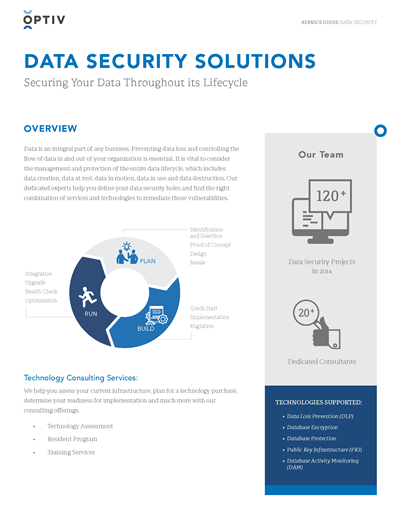Best Practices for Data Destruction to Strengthen Your Cyber Security Framework
Wiki Article
Just How Appropriate Information Damage Adds To Robust Computer System Safety Providers and Mitigates Risks of Information Violations
In today's electronic landscape, the value of appropriate data destruction can not be overemphasized, as it serves as a fundamental element of thorough computer system protection solutions. The implications of inadequate data devastation prolong past simple conformity; they can profoundly impact a company's cybersecurity stance and reputation.Importance of Data Devastation
In today's digital landscape, the significance of data damage can not be overemphasized. As organizations significantly rely upon digital possessions, the possible threats linked with information violations and unapproved accessibility intensify. Efficient data devastation is a critical element of an extensive information security approach, securing delicate info from coming under the hands of malicious actors.When data is no longer needed, just deleting data or formatting disk drives is not enough. Residual data can typically be recouped making use of readily offered tools, posturing significant hazards to both organizations and people. This highlights the necessity for durable data devastation methods that guarantee all information is irretrievably removed.
Moreover, regulatory conformity requireds, such as GDPR and HIPAA, highlight the obligation to shield sensitive data, including its proper disposal. Non-compliance can bring about severe lawful repercussions and punitive damages. data destruction. Therefore, integrating reliable data devastation procedures not only enhances safety and security yet additionally strengthens a company's credibility and trustworthiness

Techniques of Secure Information Erasure
Numerous reliable methods of secure data erasure can be used to make sure that sensitive information is permanently gotten rid of from storage devices. One widely acknowledged method is information overwriting, which entails replacing existing information with arbitrary patterns multiple times. This method substantially minimizes the possibilities of data recovery, although it may not work versus sophisticated forensic techniques.
Physical destruction is additionally a reliable method, where storage space tools are rendered unusable via shredding, squashing, or incineration. This approach makes sure that information can not be recouped by any type of means but requires careful handling of hazardous materials.
Finally, specialized software tools created for safe information erasure offer capabilities that comply with numerous erasure criteria. These tools typically consist of features like confirmation processes to confirm effective data devastation.
Utilizing these approaches in combination can enhance data security and mitigate the risks related to data violations, making certain that sensitive information is not accidentally subjected.
Legal and Compliance Factors To Consider
The approaches used for protected information erasure not just offer to secure delicate details yet also needs to straighten with legal and conformity frameworks controling information protection. Organizations are called for to follow different policies, such as the General Information Protection Guideline (GDPR), the Wellness Insurance Coverage Portability and Responsibility Act (HIPAA), and the Repayment Card Sector Information More Help Protection Criterion (PCI DSS) These guidelines mandate certain protocols for data taking care of and damage, making sure that individual and delicate data is irretrievably gotten rid of when no longer required.
Failing to follow these lawful requirements can result in substantial charges, consisting of penalties and reputational damage. Furthermore, companies must maintain records of information damage procedures, demonstrating conformity throughout audits or investigations. This paperwork not only shields against legal consequences yet additionally enhances trust with customers and stakeholders, showcasing a commitment to information protection.
Incorporating lawful and compliance considerations into data damage practices is vital for any organization. It minimizes the danger of information violations and shows an aggressive strategy to guarding sensitive info, inevitably cultivating a culture of protection and responsibility across the organization.
Effect On Cybersecurity Position
Reliable data destruction substantially boosts a company's cybersecurity posture by lowering the prospective attack surface area for cyber threats. When sensitive information is not properly destroyed, it stays easily accessible to malicious actors who can exploit this info for unapproved access, identity burglary, or corporate espionage. By applying durable information damage procedures, companies can properly reduce the danger of information breaches and boost their total security framework.Moreover, the safe and secure disposal of unnecessary or obsolete information not just secures sensitive details but additionally helps companies abide by market laws and requirements. Failing to properly damage data can cause severe legal effects and reputational damages, more jeopardizing an organization's cybersecurity stance.

Ultimately, focusing on reliable information damage is vital for promoting a robust cybersecurity stance, ensuring that companies stay vigilant versus evolving cyber dangers while shielding their vital properties and stakeholders.
Ideal Practices for Organizations
Carrying out finest practices for data damage is crucial for organizations aiming to guard delicate info and minimize cybersecurity dangers. Most importantly, companies should establish a detailed information damage policy that details treatments and obligations. This plan needs to conform with relevant guidelines, such as GDPR or HIPAA, making web sure lawful conformity.Secondly, it is vital to use accepted information sanitization techniques, including data cleaning, degaussing, and physical devastation, tailored to the kind of information and storage tool. Employing licensed professionals for data damage services improves the integrity of these methods.
In addition, companies must keep an in-depth inventory of all data storage devices, guaranteeing that all out-of-date or replaced equipment undergoes devastation. Routine audits of data Check Out Your URL damage methods can assist recognize weak points and enhance compliance.
Staff member training is an additional vital aspect, as staff must understand the importance of information devastation and stick to developed protocols. Organizations should document all information damage tasks to provide liability and traceability, which can be vital throughout audits or in the event of a breach.
Conclusion

One widely identified method is information overwriting, which entails changing existing information with random patterns multiple times.The approaches employed for safe data erasure not only offer to protect sensitive information however additionally should align with lawful and compliance frameworks controling data security. These guidelines mandate details protocols for information handling and destruction, guaranteeing that personal and delicate information is irretrievably eliminated when no longer needed.
By applying durable data damage procedures, companies can efficiently reduce the danger of data violations and improve their total security framework.
In final thought, correct information destruction is essential for boosting computer system protection services and mitigating the dangers associated with data breaches. - data destruction
Report this wiki page